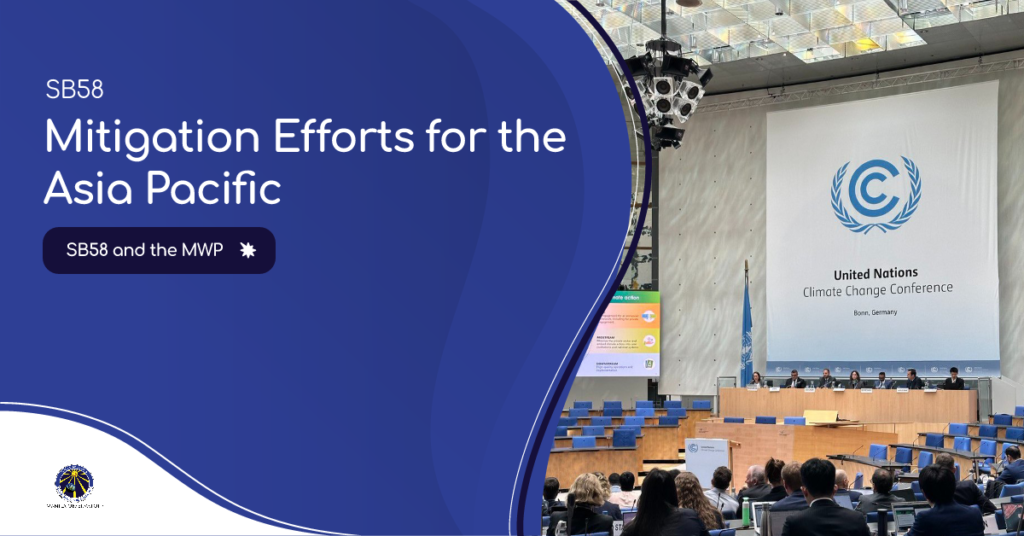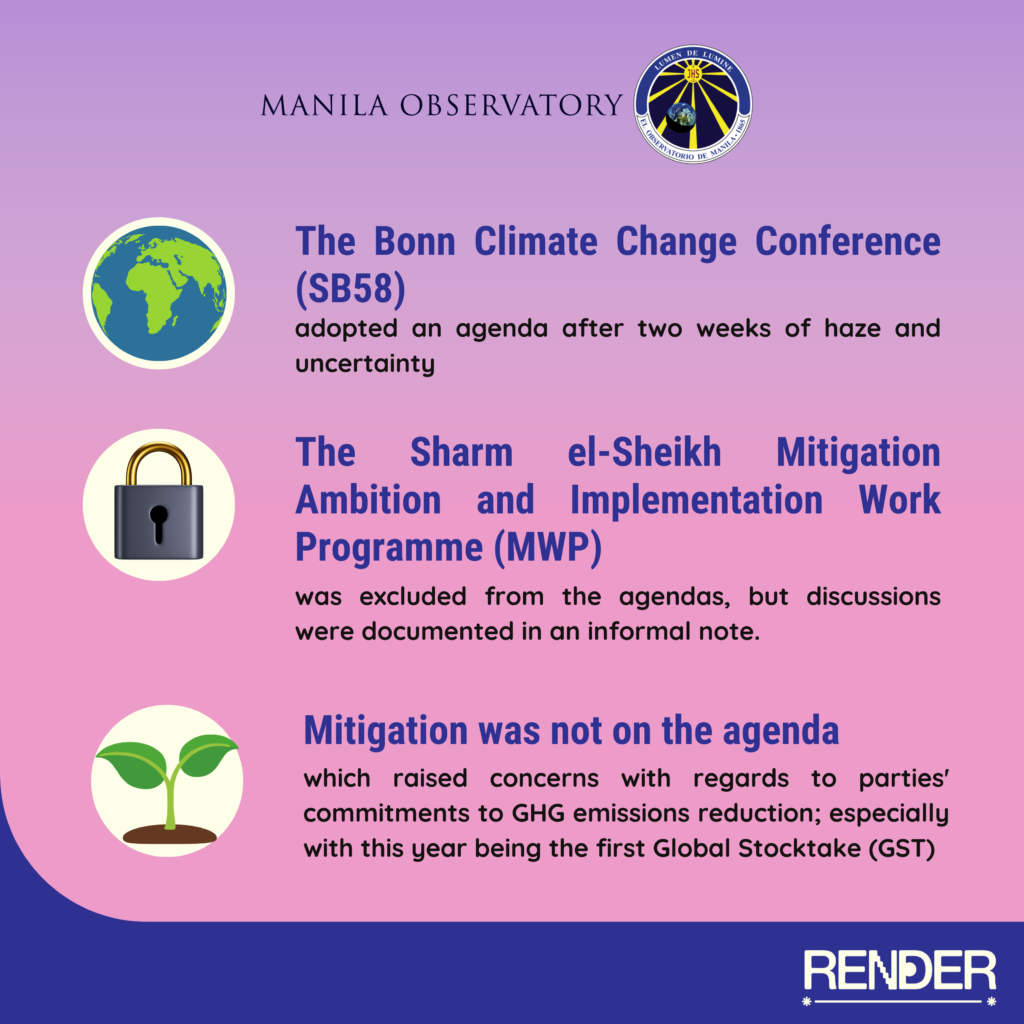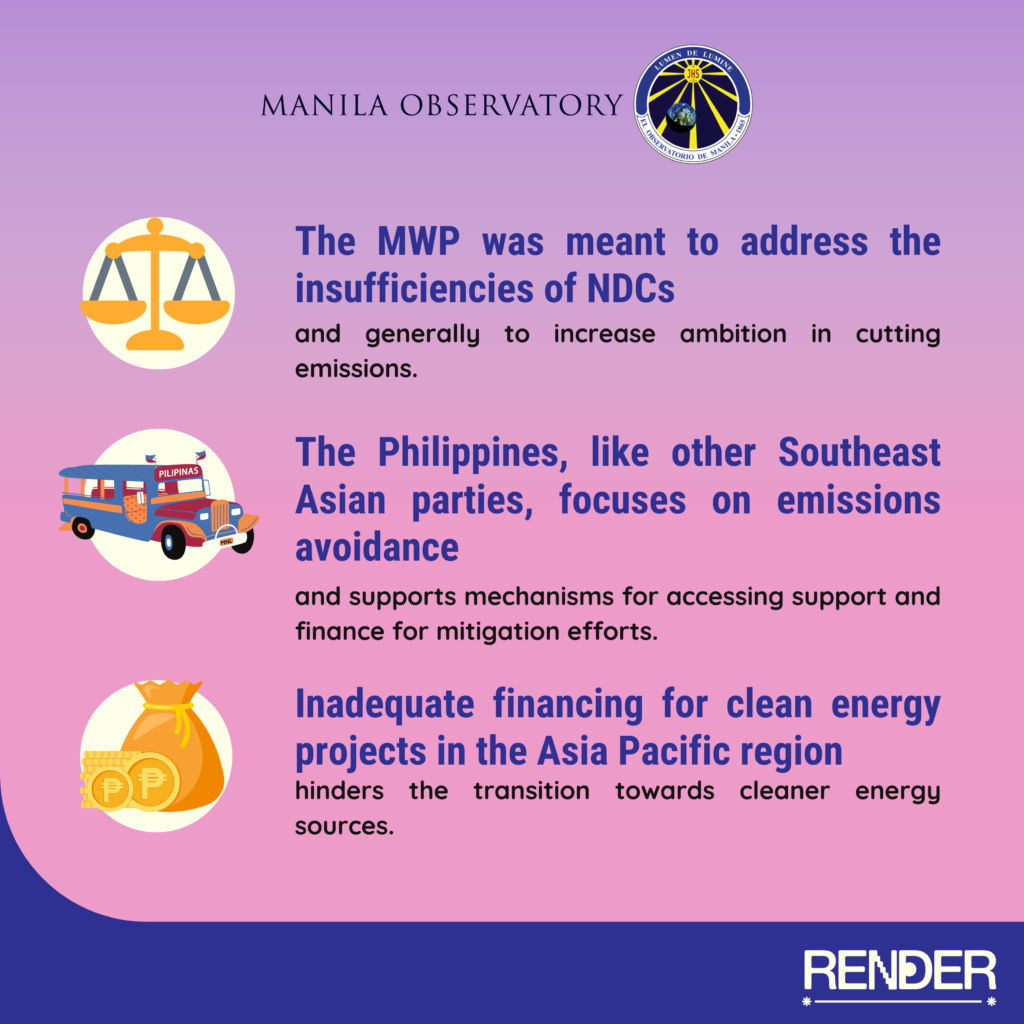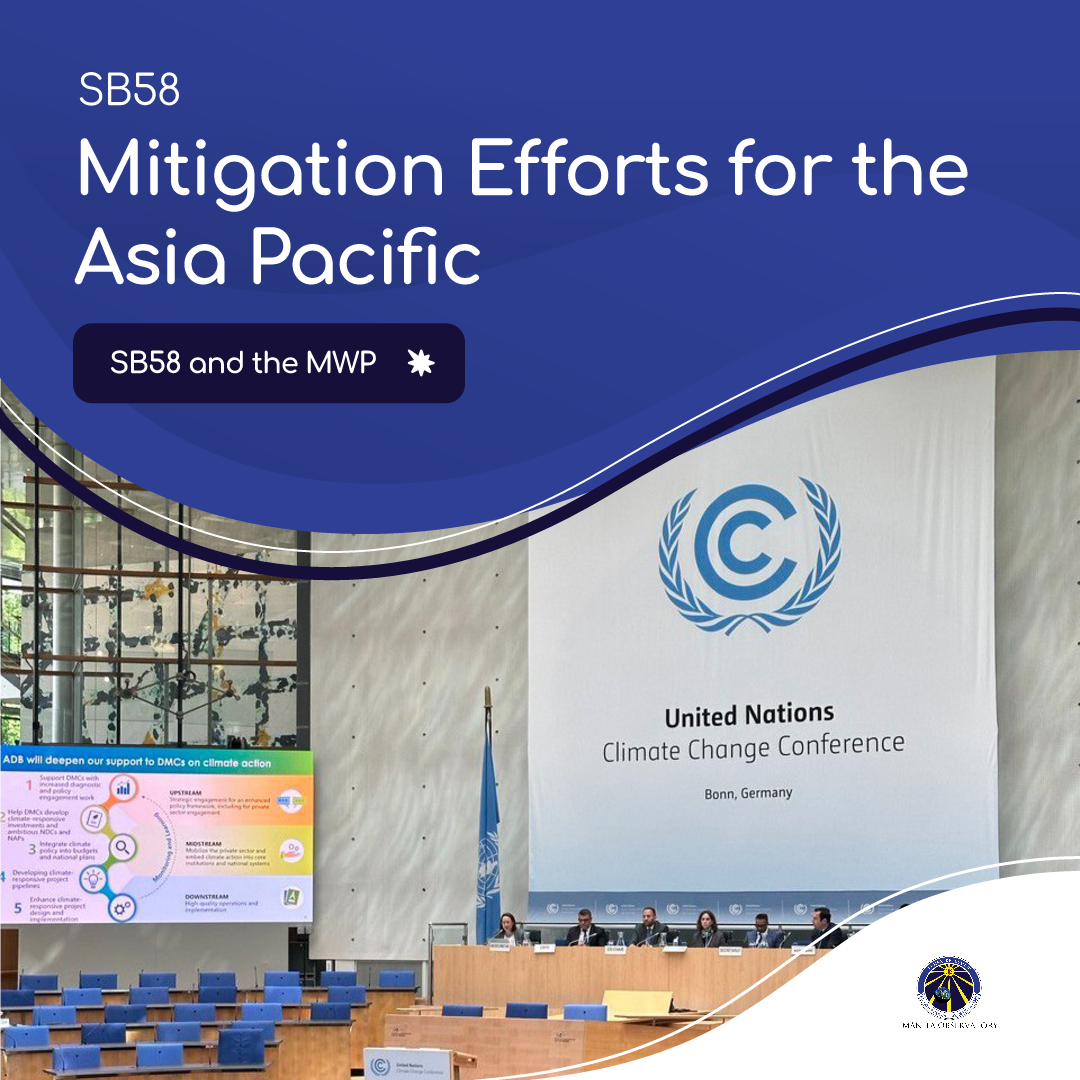
By Tonichi Regalado
After two weeks of haze and uncertainty, the annual Bonn Climate Change Conference (SB58) finally adopted an agenda. Heads of Delegation reached a compromise wherein the Sharm el-Sheikh Mitigation Ambition and Implementation Work Programme (MWP) would be excluded from the agendas. However, Chairs of the SBs would document the discussions held during the session in an informal note issued with their own authority; This agreement cleared the path for the adoption of conclusions at SB 58.
As the world gears up for COP28, it did seem particularly strange that mitigation was not on the agenda at all. SB58 attempted to address two heavyweight topics, mainly the Global Stocktake (GST) and Loss and Damage (L&D). This urgent need to streamline these processes are in parallel with and perhaps even dependent on having to reduce greenhouse gas (GHG) emissions, namely mitigation in the short and long term.

Established under the Conference of the Parties under the Paris Agreement (CMA) in COP27, the MWP was meant to address the insufficiency of Nationally Determined Contributions (NDC) and bridge the gap by increasing ambition in pledges to cut emissions. There was definitely some ambiguity for the MWP during the SBs as parties were still unclear if it was going to be on the agenda.
The European Union (EU) and the Environmental Integrity Group (EIG) made a request to include it in the conference agenda. The Like-minded Developing Countries (LMDC) proposed a contentious item regarding the urgent increase of financial support from developed countries in line with Article 4.5 of the Paris Agreement. Extensive discussions took place on these items but neither of them ended up being included in the agendas.
Parties were operating under the assumption that if the MWP would be added, then conclusions should already be in place. However, these conclusions needed to be approved, yet for two weeks, there was no agreement in the chamber to prepare for such a mandate. This lack of consensus likely played a role in the MWP’s exclusion.
The Philippines and Mitigation
The Philippines’ position has been centered on emissions avoidance for use in the cooperative mechanisms of Article 6.2, 6.4 and 6.8 of the Paris Agreement. According to the UNFCCC, emissions avoidance is defined as “the full displacement or prevention of GHG emissions expected to be generated by planned GHG emitting actions in energy, transport, manufacturing, agriculture, human induced deforestation, and other GHG emitting development activities.” Like other Southeast Asian parties, the Philippines is supporting mechanisms put forward in the UNFCCC to access support and finance to enhance its mitigation efforts.
The Climate Change Commission’s announcement regarding the Philippines’ significant allocation of US$8.2 billion, or 9% of its national budget, for climate change adaptation and mitigation programs this year highlights the country’s commitment to combating the challenges posed by climate change. However, this commitment is not unique to the Philippines alone.
The Asia Pacific region, known for its status as the largest energy-consuming region globally, is also grappling with the urgent need to transition towards cleaner energy sources. Despite 39 member states within the region adopting net-zero or carbon neutrality goals, there remains a pressing issue of inadequate financing for clean energy projects, particularly in developing countries. These persistent underinvestment challenges the region’s energy security concerns and inhibits the realization of their ambitious climate objectives.

Global Dialogues and Investment-Focused Events
These concerns were actually brought up during the MWP informal consultation of the MWP where most interventions and recommendations were focused on the dialogues taking place this year which were centered on accelerating a fair transition to clean energy. This included various efforts aimed at promoting the shift towards sustainable and equitable energy sources, including:
- Implementing policies and measures with global overview and country-specific experience;
- Addressing financial, technological and capacity-building needs in this area, such as through international cooperation, including with non-Party stakeholders, and provision of support to developing countries;
- Promoting sustainable development and understanding socioeconomic effects.
The Global Dialogues were meant to ratchet up ambition by providing a space for exchanging views and giving parties a chance to discuss renewable energy (RE), energy storage, and carbon capture. Unfortunately, due to timeliness issues with the secretariat, the Global Dialogues started right before SBs and ended quite abruptly. Parties suggested regional conversations, asking “how” questions to frame the next dialogue, including case studies and world café-style debates, and more. They proposed the following themes for future discussions:
- Increasing the capacity of renewable energy for those without access to it;
- the energy transition;
- and the decoupling of economies from fossil fuels.
Parties expressed that the first dialogues were helpful in terms of getting a sense of the current state of play, but they should have gone beyond scene-setting to challenge delegations.
One area of concern raised by the parties was the lack of substantial discussion on Small Island Developing States (SIDS) as well as the Asia-Pacific. Given the vulnerability of these nations to the impacts of climate change, it was disappointing that their specific challenges and needs were not given sufficient attention. It was suggested that the regional dialogues be held alongside the regional climate weeks. For the Asia-Pacific, it was announced that in November, the RCW would be in Johor, Malaysia.
The Path Forward
While the UNFCCC process values diverse perspectives and regional representation, it is important to continue focused MWP discussions within the subsidiary bodies, even if it was not included in the agenda. The absence of mitigation was puzzling but it just reaffirmed how significant the MWP is moving forward.
It is now clear that the global energy sector is falling short of the targets set in the Paris Agreement. Despite an increase in clean energy investment, the distribution remains imbalanced, with over 90% of the growth occurring in advanced economies and China since 2021. For some in the climate sector, the MWP could perhaps function down the line as a building block for an RE deployment goal within the UNFCCC. To achieve this, compromise and collaboration are crucial. The work programme serves as a valuable platform for countries to share knowledge, exchange best practices, and identify investment opportunities.

